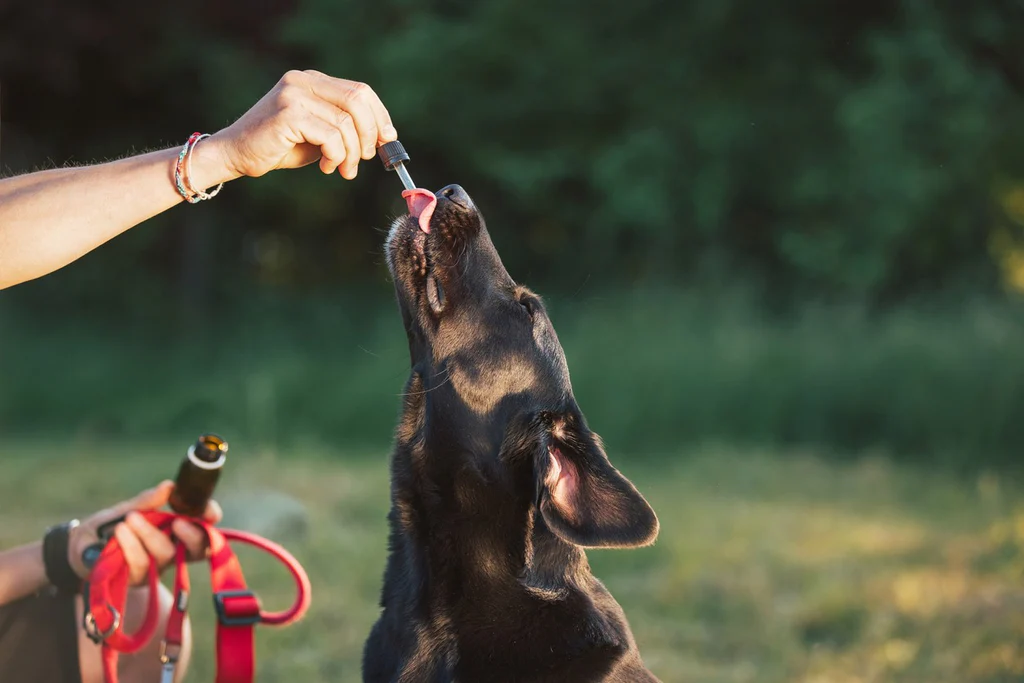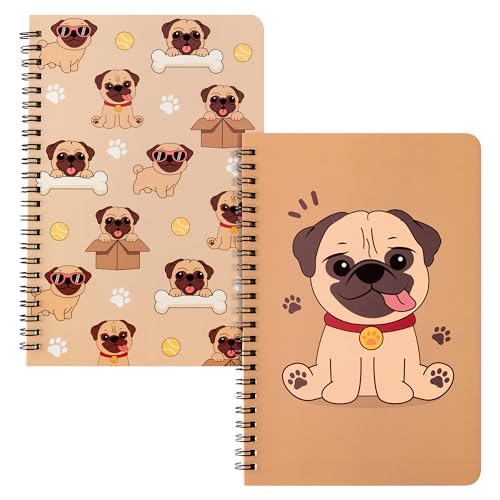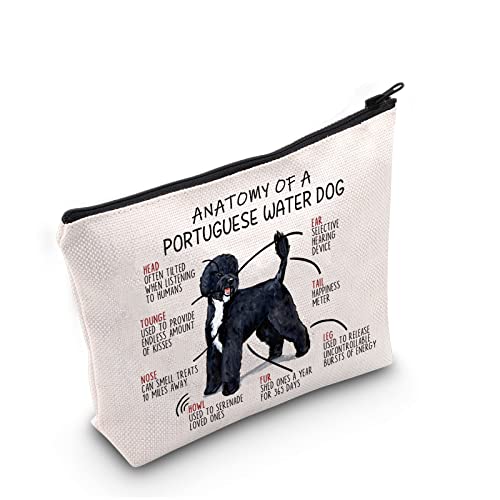Why Is My Cat Sneezing?
Cats are notorious for being independent and stoic creatures. So when they start sneezing, it’s natural for their owners to worry. Do you ever ask yourself why is my cat sneezing?
Sneezing in cats can be caused by a variety of things, from allergies to respiratory infections, so it’s important to understand the underlying cause before taking any action. In this blog post, we’ll take a look at some of the most common causes of sneezing in cats, and provide some tips on how to help your furry friend feel better. Stay tuned!
Why Is My Cat Sneezing?
There are a number of potential causes for your cat’s sneezing, ranging from allergies to respiratory infections. One of the most common causes is an upper respiratory infection, which is usually caused by a virus or bacteria. Other possible causes include:
- Allergies to pollen, dust, or other substances in the environment: If your cat is sneezing and has watery eyes, it’s likely that they’re suffering from allergies. Allergic reactions can be treated with antihistamines, but it’s important to speak to your veterinarian first so they can recommend the best course of treatment
- Respiratory irritants such as smoke or perfume: If your cat is sneezing and has difficulty breathing, it’s possible that they’re reacting to something in their environment. If you suspect this is the case, remove the irritant from their environment and see if the sneezing subsides.
- Foreign bodies stuck in the nose, such as grass seeds: If you notice your cat sneezing more when they’re outside, it’s possible that they’ve got a foreign body stuck in their nose. Inspect their nostrils carefully and remove any foreign objects you see.
- Nervousness or stress: Occasionally, cats may start sneezing when they’re feeling anxious or stressed. If you think this might be the case, try to create a calm environment for your cat and see if the sneezing subsides.As you can see, there are a number of potential causes for your cat’s sneezing.
- A cold or flu: If your cat is sneezing and has a fever, they may have caught a cold or the flu. These viruses are highly contagious, so it’s important to keep them away from other cats if possible. Treatment typically involves rest and fluids, but you should speak to your veterinarian for specific advice.
There are a few causes of sneezing in cats that can be dangerous, so it’s important to be aware of these before taking any action. One dangerous cause of sneezing in cats is feline herpesvirus-1 (FHV-1), which is a highly contagious respiratory virus. FHV-1 can cause severe respiratory infection, and can even be fatal in some cases.
If your cat is sneezing frequently and has other symptoms such as a runny nose, watery eyes, or fever, it’s best to take them to the vet for a check-up. In most cases, sneezing is not a serious problem and will resolve itself on its own. However, if the sneezing is accompanied by other symptoms or persists for more than a few days, it’s always best to err on the side of caution and have your cat checked out by a professional. Now you know why is your cat sneezing?
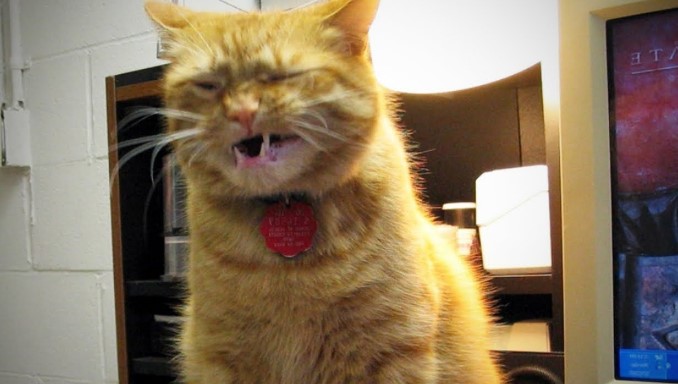
How to Help a Sneezing Cat
Above is the answers for why is my cat sneezing, here’s how to help a sneezing cat.
If your cat is sneezing occasionally and doesn’t seem to be in any distress, there’s no need to take them to the vet. However, if the sneezing is persistent or accompanied by other symptoms, it’s always best to have them checked out by a professional. In the meantime, there are a few things you can do to help your sneezing cat feel more comfortable:
– Make sure they have plenty of fresh water to drink. This will help to prevent dehydration, which can occur if they’re losing fluids through their nose.
– Keep their litter box clean. A dirty litter box can irritate your cat’s respiratory system and make them more likely to sneeze.
– Keep their environment clean. Vacuum regularly and dust surfaces to reduce the amount of allergens in the air.
– Avoid using perfumes, smoke, or other respiratory irritants around your cat. These can make sneezing worse and potentially cause other respiratory problems.
– If your cat is sneezing due to a cold or flu, you can give them over-the-counter medication designed for cats. However, it’s always best to check with your vet before giving your cat any medication, as some medications are not safe for cats.
Sneezing is a common problem in cats, but it’s usually not serious. If your cat is sneezing frequently or has other symptoms, it’s always best to have them checked out by a professional. In the meantime, there are a few things you can do to help your sneezing cat feel more comfortable.
Allergies in Cats: Symptoms and Treatment
Sneezing Just like people, cats can suffer from allergies. Allergies can be caused by a number of things, including dust, pollen, and certain foods. The most common symptom of an allergy in a cat is itchiness, but they may also experience respiratory problems, such as sneezing or a runny nose.
If you think your cat may be allergic to something, it’s best to take them to the vet for a check-up. The vet will be able to determine if your cat is indeed allergic to something and help you find the best course of treatment. In some cases, allergies can be treated with medication, but in other cases, the only way to manage them is to avoid the allergen altogether.
If you think your cat may be suffering from allergies, here are a few things to look out for:
– Itchiness: If your cat is scratching themselves more than usual, it may be a sign that they’re itch. Allergies can cause intense itchiness, so if you notice your cat scratching themselves frequently, it’s best to take them to the vet.
– Respiratory problems: If your cat is sneezing or has a runny nose, it may be a sign of an allergy. Allergies can cause respiratory problems in cats, so if you notice any of these symptoms, it’s best to have your cat checked out by a vet.
– Diarrhea: In some cases, allergies can cause diarrhea. If your cat is suffering from diarrhea, it’s important to take them to the vet so they can be treated and prevent dehydration.
If you think your cat may be suffering from allergies, the best thing to do is take them to the vet for a check-up. The vet will be able to determine if your cat is allergic to something and help you find the best course of treatment. In some cases, allergies can be treated with medication, but in other cases, the only way to manage them is to avoid the allergen altogether.
Some tips for dealing with cat allergies:
– Keep your cat indoors: One of the best ways to reduce allergies is to keep your cat indoors. This will help to reduce their exposure to allergens, such as pollen and dust.
– Vacuum regularly: Vacuuming regularly will help to remove allergens from your home and make it easier for your cat to breathe.
– Wash bedding regularly: Washing your cat’s bedding regularly will help to remove allergens and keep them from coming into contact with your cat’s skin.
– Avoid using perfumes or scented products: Using perfumes or scented products around your cat can irritate their respiratory system and make allergies worse.
– Seek professional help: If you think your cat may be suffering from allergies, the best thing to do is take them to the vet for a check-up. The vet will be able to determine if your cat is allergic to something and help you find the best course of treatment. In some cases, allergies can be treated with medication, but in other cases, the only way to manage them is to avoid the allergen altogether.
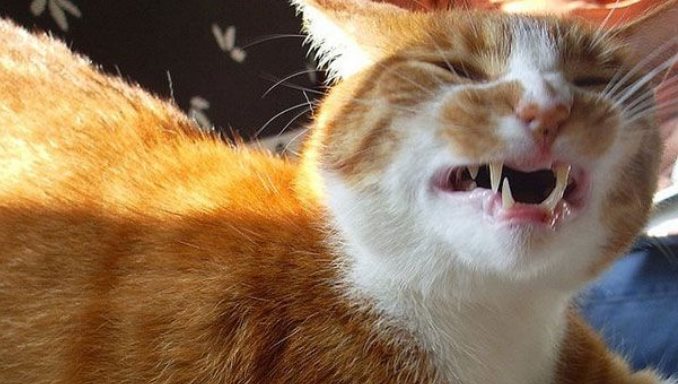
Colds in Cats: Symptoms and Treatment
Colds are a common problem in cats, but they’re usually not serious. If your cat is sneezing frequently or has other symptoms, it’s always best to have them checked out by a professional. In the meantime, there are a few things you can do to help your sneezing feline feel more comfortable.
First and foremost, make sure your cat has plenty of fresh water to drink. A stuffy nose can make it difficult for your cat to breathe, so they may not be able to take in as much water as they need. It’s also important to keep their food dish clean and free of any debris that could irritate their nose.
If your cat is having trouble breathing, you can try using a humidifier to add moisture to the air. This will help to open up their airways and make it easier for them to breathe. You should also avoid using any perfumes or scented products around your cat, as these can irritate their respiratory system.
If your cat’s cold is severe, you may need to take them to the vet for treatment. In some cases, antibiotics may be necessary to clear up the infection. The vet may also prescribe medication to help relieve your cat’s symptoms, such as sneezing and runny nose.
While most cats will recover from a cold without any problems, it’s always best to have them checked out by a vet to make sure they’re not suffering from anything more serious.
Some tips for dealing with cat colds:
– Keep your cat hydrated: Make sure your cat has plenty of fresh water to drink. A stuffy nose can make it difficult for them to breathe, so they may not be able to take in as much water as they need.
– Keep their food dish clean: Keep your cat’s food dish clean and free of any debris that could irritate their nose.
– Use a humidifier: If your cat is having trouble breathing, you can try using a humidifier to add moisture to the air. This will help to open up their airways and make it easier for them to breathe.
– Avoid scented products: You should also avoid using any perfumes or scented products around your cat, as these can irritate their respiratory system.
– Visit the vet: If your cat’s cold is severe, you may need to take them to the vet for treatment. In some cases, antibiotics may be necessary to clear up the infection. The vet may also prescribe medication to help relieve your cat’s symptoms, such as sneezing and runny nose.
Foreign Object Stuck in Cat’s Nose: Symptoms and Treatment
If you think your cat may have a foreign object stuck in their nose, it’s important to act quickly. If the object is not removed, it could cause serious damage to your cat’s respiratory system.
The most common symptom of a foreign object stuck in the nose is sneezing. Your cat may also have trouble breathing or may be pawing at their face. If you suspect your cat has something stuck in their nose, check it carefully to see if you can spot the object.
If you can see the object, try to remove it with tweezers. If the object is lodged too deeply to be reached with tweezers, or if you’re not sure how to remove it safely, take your cat to the vet. They will be able to remove the object without causing any further damage.
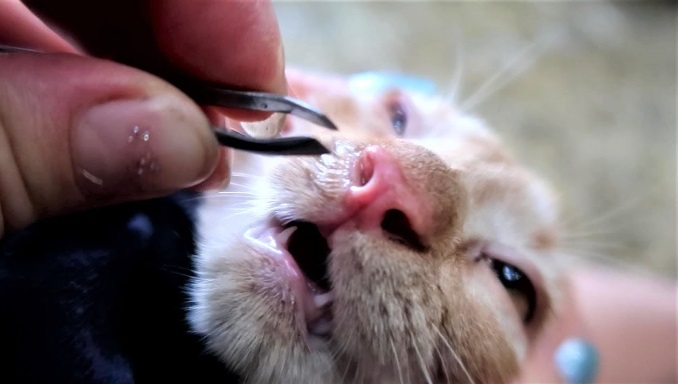
What Is Cat Flu? Symptoms, Causes, and Treatment
Does why is my cat sneezing related to cat flu? Cat flu is a common viral infection that can affect both cats and kittens. The most common symptoms are sneezing, runny nose, and watery eyes. In severe cases, cat flu can lead to pneumonia and other serious respiratory problems.
Most cases of cat flu are caused by one of two viruses: feline herpesvirus-1 (FHV-1) or feline calicivirus (FCV). Both of these viruses are highly contagious and can be passed from one cat to another through close contact, such as sharing a food bowl or litter box.
There is no cure for cat flu, but most cats will recover within two to three weeks with proper care. Treatment focuses on relieving symptoms and preventing secondary infections.
If your cat is showing signs of cat flu, take them to the vet as soon as possible. They will be able to diagnose the infection and recommend the best course of treatment. In severe cases, hospitalization may be necessary.
Preventing Cat Flu
The best way to prevent cat flu is to keep your cat up-to-date on their vaccinations. Both FHV-1 and FCV are included in the standard feline vaccination schedule.
You can also help to prevent the spread of cat flu by keeping your cat away from other cats that are sick. If you have multiple cats in your home, make sure to clean and disinfect all of their food bowls, litter boxes, and bedding on a regular basis.
When to See the Vet
If your cat is showing any signs of illness, it’s always best to take them to the vet for an examination. This is especially true if they are sneezing, have a runny nose, or are having trouble breathing.
These symptoms can indicate a number of different health problems, so it’s important to get a diagnosis from a professional. Your vet will be able to recommend the best course of treatment based on your cat’s individual needs.
Is cat flu dangerous?
Yes, cat flu can be dangerous, especially to young, old, or immunocompromised cats. Symptoms can range from mild to severe, and in some cases, can lead to death. If you think your cat may have flu, it’s important to take them to the vet for treatment. There are two types of cat flu, and both are caused by viruses:
– Herpesvirus causes upper respiratory infection and can lead to severe symptoms including pneumonia, brain damage, and death. It is the most common cause of death from cat flu.
– Calicivirus primarily affects the lower respiratory tract and causes milder symptoms, but can still be deadly in some cases. Treatment for both types of cat flu is typically supportive, and focuses on relieving symptoms and ensuring the cat stays hydrated. In severe cases, hospitalization may be necessary. There is no cure for either virus, but there are vaccines available to help protect cats from both herpesvirus and calicivirus. If your cat is at risk for either virus, talk to your veterinarian about vaccination.
How to Help A Cat with The Flu
If your cat has the flu, there are a few things you can do to help them feel better:
– Make sure they have plenty of fresh water to drink.
– Feed them small meals frequently throughout the day.
– Keep their litter box clean.
– Keep them away from other cats until they have recovered.
– Take them to the vet for treatment.
In severe cases, cat flu can be deadly. If your cat is showing signs of respiratory distress, such as difficulty breathing or rapid breathing, take them to the vet immediately. Hospitalization may be necessary to provide supportive care. With proper treatment, most cats will recover from the flu within two to three weeks.
What Should You Feed Your Cat During Illness and Sneezing?
When your cat is ill, it’s important to make sure they are getting enough to eat and drink. Feed them small meals frequently throughout the day, and make sure they have plenty of fresh water available at all times. You may also want to try a warm chicken broth to help soothe their throat.
Cats with the flu can sometimes have a decreased appetite, so it’s important to make sure they are eating enough to keep their energy up. If your cat is not eating or drinking, take them to the vet immediately.
There are a few things to consider when deciding what to feed your cat during illness and sneezing. If your cat is having trouble keeping food down, you may want to try a bland diet or give them smaller, more frequent meals. You should also avoid giving them any foods that could irritate their stomach or cause vomiting. Some examples of these include fatty foods, spicy foods, or anything with a lot of sugar.
If your cat is having trouble breathing, it is important to make sure they are getting plenty of fluids. You can try feeding them wet food or adding water to their dry food. You should also avoid giving them any foods that could aggravate their respiratory condition. If your cat is on medication, you should talk to your veterinarian about what types of food are safe for them to eat.
Purina FortiFlora Cat Probiotic Powder Supplement
As any pet owner knows, a happy, healthy cat starts with a nutritious diet. And while a balanced diet is important for all cats, it’s especially crucial for those who suffer from diarrhea. That’s where Purina Pro Plan Veterinary Diets FortiFlora comes in.
FortiFlora is a probiotic supplement designed specifically for cats with diarrhea. It contains a probiotic to promote normal intestinal microflora and help your cat maintain a healthy digestive system. Plus, it’s fortified with essential vitamins and minerals to support your cat’s overall health.
If you’re looking for a probiotic supplement to help your cat with diarrhea, look no further than Purina FortiFlora. This feline nutritional supplement is recommended by veterinarians and contains a probiotic to promote normal intestinal microflora. The proprietary microencapsulation process ensures enhanced stability, making Purina FortiFlora the perfect choice for your cat’s dietary needs.
Vetoquinol Viralys L-Lysine Supplement for Cats
If you’re looking for a daily supplement that will help support your cat’s immune system and eye and respiratory health, try Vetoquinol Viralys L-Lysine Supplement. This powerful formula provides the recommended amount of lysine for cats, which has been shown to help manage common feline health issues like sneezing, runny nose, and watery, inflamed eyes. Plus, cats love the delicious maple-flavored gel, so it’s easy to give them the immune support they need.
Feline Aerosol Chamber Inhaler Spacer for Cats
If you’re looking for a top-quality l-lysine supplement for your cat, you can’t go wrong with Vetoquinol Viralys. This supplement has been vet-tested and approved, so you can be confident in its effectiveness. The Flow-Vu inhalation indicator counts breaths and ensures a perfect fit, while the reduced medication cost makes it more affordable than ever. The easy-to-use canine consol chamber delivers any Metered Dose Inhaler medication straight to the lungs, and the custom valve/antistatic chamber is designed specifically for cats. With two silicone masks to choose from, Vetoquinol Viralys is sure to fit all of your feline friend’s needs.
Nutritious Wet and Dry Cat Food
Poultry & Beef Feast Collection Wet Cat Food
This delicious variety pack features three mouthwatering flavors that your cat is sure to love – chicken, turkey, and beef. Made with tender, delicate bites and essential vitamins and minerals to support overall health, this gourmet wet food is 100% complete and balanced nutrition for adult cats. Each serving is also covered in a tempting gravy that will make mealtime a truly flavor-filled experience. Plus, the recyclable cans make it easy to do your part for the environment. So why wait? Give your feline friend the flavors they crave with the Poultry & Beef Feast Collection Wet Cat Food from Purina Fancy Feast.
Sheba Perfect Portions Paté Wet Cat Food
Introducing Sheba Perfect Portions Paté Wet Cat Food, a delicious and nutritious way to feed your feline friend. This wet food comes in three delectable flavors: chicken, turkey, and beef. It’s made without grains, corn, wheat, or soy, and contains no artificial flavors or preservatives. Plus, it’s easy to use – just snap, peel, and serve. Each tray contains one perfect portion for your cat. And because there are no leftovers, you don’t have to worry about messy clean-up. Sheba Perfect Portions Paté Wet Cat Food is a meal that your cat will love, at any stage of life.
Purina ONE Natural Dry Cat Food
Looking for a natural, dry cat food that is easy on your kitty’s stomach? Look no further than Purina ONE Sensitive Skin and Stomach Formula. This food is made with real turkey as the first ingredient, and is packed with 34% protein to keep your kitty strong and healthy. It also contains omega-6 fatty acids to help nourish sensitive skin, and is recommended by veterinarians. So if you’re looking for a dry food that is good for your cat’s digestive system, coat, and skin, be sure to try Purina ONE Sensitive Skin and Stomach Formula.
Hill’s Science Diet Dry Cat Food
Looking for a dry cat food that will keep your feline friend healthy and happy? Look no further than Hill’s Science Diet Dry Cat Food. This food is formulated with taurine for heart health, plus balanced minerals for kidney and bladder health. It is also high in quality protein to help your cat build and maintain lean muscle mass. Additionally, this food is packed with vitamin E plus omega 3s and 6s to give your cat healthy skin and fur. And it is made with natural ingredients so you can feel good about what you’re feeding your cat. Plus, it is made in the USA with global ingredients you can trust.
Sick cats should eat dry food or wet food?
There is no right or wrong answer when it comes to what type of food sick cats should eat. Some people believe that dry food is best because it is easier for cats to digest, while others believe that wet food is best because it contains more moisture and nutrients. Ultimately, it is up to the owner to decide what type of food their sick cat will eat.
FAQs about Why Is My Cat Sneezing
Will cat sneezing go away on its own?
In most cases, cat sneezing will go away on its own. However, if your cat is sneezing more than usual or if the sneezing is accompanied by other symptoms, it’s best to take them to the vet for an evaluation. Additionally, if your cat is sneezing blood or has a discharge from their nose, this is a sign of a more serious condition and you should take them to the vet right away.
Is it bad if my cat is sneezing?
Sneezing is a normal bodily function that helps to clear the respiratory system of irritants. However, if your cat is sneezing more than usual, it could be a sign of an underlying health condition. Additionally, if the sneezing is accompanied by other symptoms, such as a runny nose or fever, it’s best to take them to the vet for an evaluation.
How much sneezing is too much for a cat?
If your cat is sneezing more than usual, it could be a sign of an underlying health condition. Additionally, if the sneezing is accompanied by other symptoms, such as a runny nose or fever, it’s best to take them to the vet for an evaluation.
What home remedy can I give my cat for sneezing?
There are a number of home remedies that you can give your cat for sneezing. Some of these include:
-Giving them a warm bath
-Using a humidifier in their room
-Feeding them chicken soup
-Putting a warm compress on their chest or neck
If your cat is still sneezing after trying these home remedies, you should take them to the vet to rule out any serious medical conditions.
How did my indoor cat get a cold?
There are a number of ways that indoor cats can get colds. Some of these include:
-Coming into contact with another sick animal
-Exposure to drafts or cold temperatures
-A weakened immune system
If you think your cat has a cold, it’s best to take them to the vet for an evaluation. Additionally, there are a number of home remedies that you can try to help ease their symptoms, such as:
-Giving them a warm bath
-Using a humidifier in their room
-Feeding them chicken soup
-Putting a warm compress on their chest or neck.
If your cat is still sneezing after trying these home remedies, you should take them to the vet to rule out any serious medical conditions.
Can cats get Covid-19?
Cats can get Covid-19, however, they are not as susceptible to the virus as dogs are. Additionally, there is no evidence that cats can transmit the virus to humans. If you think your cat has Covid-19, you should take them to the vet for an evaluation.
If you have any further questions, please feel free to contact us.
How do vets treat cat colds?
Veterinarians typically treat cat colds with antibiotics, anti-inflammatory medications, and fluids. It is important to note that cats with colds should be kept in a warm, dry environment where they can rest comfortably.
The veterinarian may recommend additional treatments such as bronchodilators or corticosteroids if the cat has difficulty breathing due to nasal congestion. Depending on the severity of the cold, cats may also require additional tests such as X-rays and blood work in order to determine the underlying cause of their illness.
In some cases, cats with colds may need to be hospitalized for further treatment or observation. It is important that pet owners follow their veterinarian’s advice and provide the necessary care for their cat in order to prevent the cold from becoming a more serious condition. With proper medical treatment, most cats with colds can make a full recovery.
Conclusion
Cats sneeze for a variety of reasons, some more serious than others. If your cat is sneezing frequently, it’s important to take her to the veterinarian to rule out any underlying medical conditions. In the meantime, here are a few things you can do to help keep your kitty healthy and comfortable. We hope this post has helped you better understand why cats sneeze and how you can help them feel their best.
Above is the post “Why is my cat sneezing?”, Thanks for reading!










